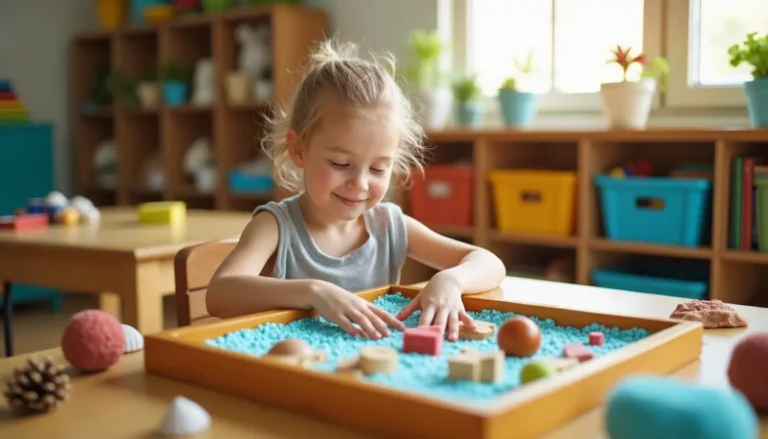Did you know that tactile learning achieves retention rates of up to 75%, while traditional lecture-based learning reaches only 5%. These numbers tell us the need to understand and the use of tactile learning as a powerful educational tool.
Throughout history, tactile learning has driven some of humanity’s most profound achievements. For example, early humans learned to harness fire not through theory but by experimenting with friction and flints, refining the process over time. This example tells us how tactile experiences have advanced human understanding and shaped civilization.
Tactile learning extends beyond object manipulation and touch. The method builds on the principle that sensory experiences play a significant role in cognitive development. Students with special educational needs benefit from this approach. Research demonstrates how hands-on experiences activate brain regions that control sensory processing and cognitive function. This activation improves fine motor skills and spatial awareness.
The following sections explore tactile learning’s core concepts, mechanisms, and importance. You will discover practical strategies, tools, and techniques to apply this learning style to your educational experience.
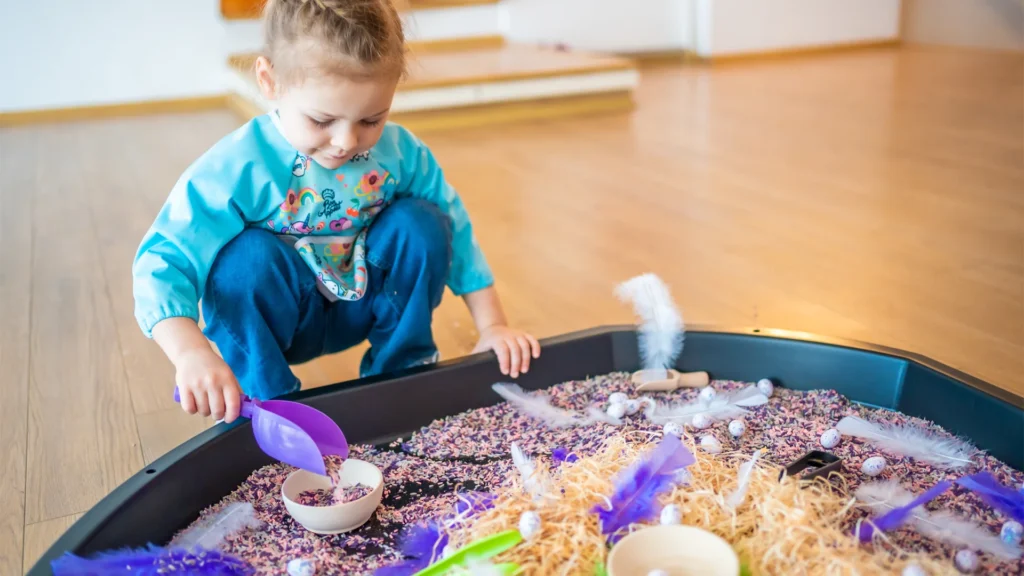
Table of Contents
ToggleWhat Is Tactile Learning?
We define tactile learning as the process of understanding and retaining information through touch Essentially, it’s about making sense of the world through direct physical interaction with objects and materials. This type of learning enables us to build deeper understanding and recall through direct touch. When students manipulate, squeeze, or explore materials, they transform abstract concepts into tangible, memorable experiences.
Explaining Learn by touch
Learning by touch is a process that activates our brain’s sensory processing abilities, significantly boosting focus, memory, and understanding. The tactile experience deepens comprehension by turning theoretical knowledge into real-world interactions.
Here are the key elements that make touch-based learning so effective:
- Direct Manipulation: Handling objects fosters better comprehension.
- Fine Motor Skills: Small hand movements help in understanding intricate details.
- Sensory Engagement: Touching materials enhances memory retention.
- Hands-On Exploration: Actively exploring concepts by physically interacting with them solidifies learning.
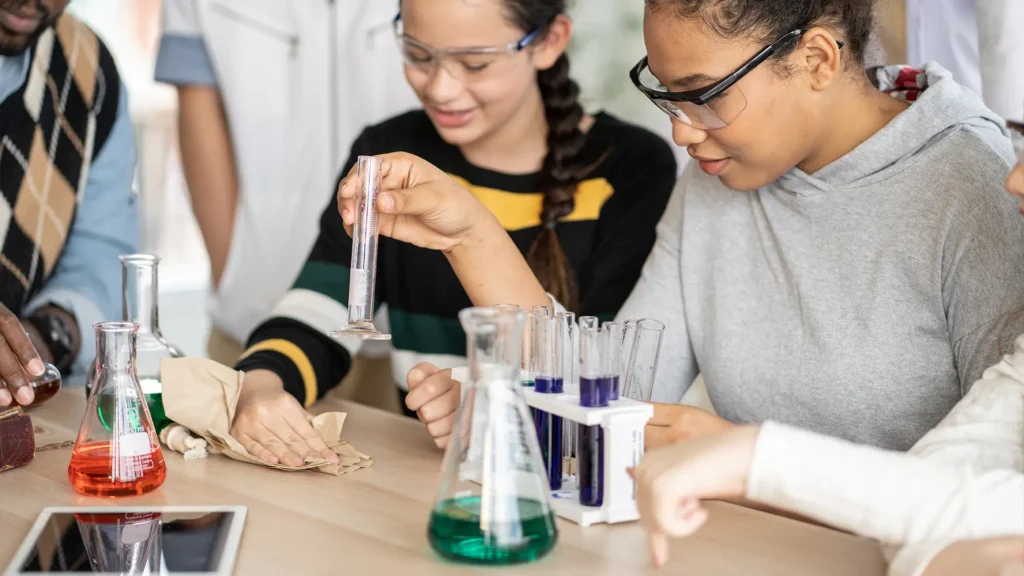
What Is Tactile/Kinesthetic Learning Style?
Tactile learning and kinesthetic learning are often used interchangeably, but there’s a subtle difference. Tactile learning focuses on the use of fine motor skills and hand movements, while kinesthetic learning involves whole-body movement. A tactile learner thrives when engaging in activities that require using their hands and engaging in detailed, hands-on experiences.
- Manipulating Objects: Tactile learners excel when they can physically work with materials.
- Engaging in Hands-On Activities: They learn best through direct, touch-based interaction.
- Creating Tangible Representations: Building or crafting items to visualize concepts helps them understand abstract ideas.
Tactile learners are often sensitive and emotionally connected to what they touch. Traditional visual or auditory methods might not fully engage them, as they require that physical connection to make sense of information. As Maria Montessori once said, “What the hand does, the mind remembers,” illustrating the powerful link between touch and cognitive development. For many students, tactile learning creates a richer, more meaningful educational experience—especially for those who might struggle in more conventional classroom settings.
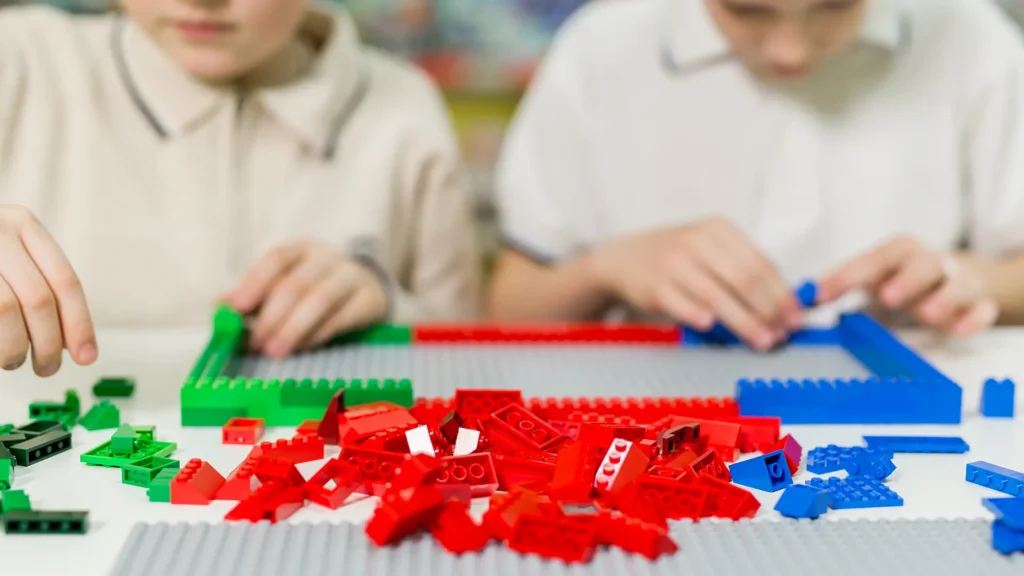
Characteristics of Tactile Learners
Tactile learners possess distinct qualities that set them apart in the classroom. By understanding these traits, we can create environments and strategies that enhance their learning experience. Here are the key characteristics of tactile learners:
1. Strong Fine Motor Skills
Tactile learners excel in handling small objects with precision. Their fine motor skills allow them to manipulate tools, craft materials, or engage in detailed activities that others might find challenging.
2. Preference for Hands-On Activities
Rather than passively listening or watching, tactile learners thrive when they are actively involved in experiments, projects, and hands-on activities. They enjoy exploring concepts by physically interacting with materials and objects.
3. Natural Inclination Toward Physical Movement
Tactile learners often feel the need to move while learning. They may fidget, tap, or engage in physical actions as they process information, helping them to focus and retain knowledge more effectively.
4. Excellence in Projects and Practical Applications
These learners shine in environments where they can apply their knowledge through real-world projects or practical tasks. Whether it’s building something, creating a model, or conducting an experiment, tactile learners excel when they can bring concepts to life.
5. Learning Through Touch and Manipulation
Tactile learners have a natural tendency to understand and retain information through touch. They learn best when they can physically manipulate objects, experiment with materials, or directly interact with their environment.
By recognizing these unique traits, educators and parents can better tailor their teaching approaches to meet the needs of tactile learners, allowing them to excel and develop their full potential.
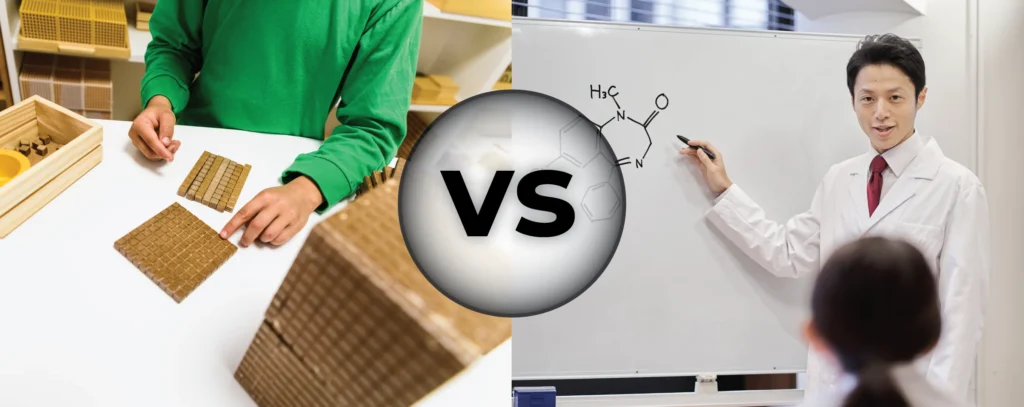
What Are the Differences Between Tactile and Other Learning Styles?
Tactile learners stand out from visual and auditory learners in key ways, especially in how they process and retain information. While each learning style has its unique strengths, tactile learners are distinct in their reliance on touch and physical engagement for learning. Below is a comparison of tactile learning with other learning styles:
| Aspect | Tactile Learners | Other Learning Styles |
|---|---|---|
| Information Processing | Through touch and movement | Through sight (visual learners) or sound (auditory learners) |
| Learning Environment | Hands-on, interactive | Structured, observation-based (visual learners may prefer watching demonstrations, auditory learners prefer listening to instructions) |
| Memory Retention | Best through physical engagement | Through listening or viewing (visual learners remember through images or reading, auditory learners recall through sound or speech) |
Tactile learners often find it difficult to absorb information in a purely visual or auditory format. For example, while visual learners may excel at remembering diagrams, charts, and written material, and auditory learners may grasp concepts through lectures and discussions, tactile learners need a more interactive approach. By engaging physically with the material, whether through manipulation, experimentation, or hands-on activities, tactile learners can make information stick in a way that feels natural to them.
Recognizing these differences helps educators design more inclusive environments, allowing learners of all types to thrive by playing to their strengths.
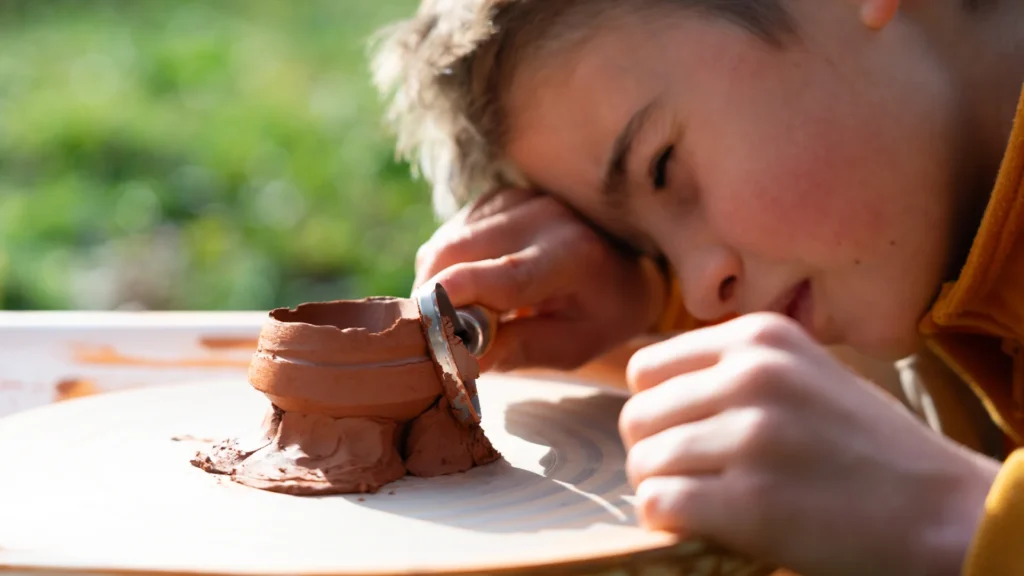
What Signs Show That You Might Be a Tactile Learner?
Tactile learners have a natural need to interact with the physical world around them in order to fully grasp new concepts. They thrive in environments where they can use their hands and bodies to explore, manipulate, and learn. If you’re wondering whether you might be a tactile learner, here are some signs to look for:
1. You Remember Information Better When Writing It Down
Tactile learners often recall information more easily when they physically write it down. The act of writing engages their sense of touch and helps solidify the information in their memory.
2. You Find Yourself Fidgeting During Long Lectures
If you struggle to sit still during lectures or presentations, fidgeting with objects or tapping your feet, it might be a sign that you need physical activity to stay focused. Tactile learners often find it difficult to absorb information through passive listening alone.
3. You Excel at Hands-On Experiments and Projects
Tactile learners shine when they’re actively involved in experiments, crafting, or building projects. If you find that you’re most engaged when you’re physically working with materials, you’re likely tapping into your tactile learning strengths.
4. You Prefer Creating Models or Physical Representations
Rather than simply reading or listening to information, you prefer creating tangible representations of what you’re learning. Whether it’s making a model, drawing a diagram by hand, or crafting something related to the lesson, you learn best when you can physically interact with the material.
5. You Learn Best Through Practical Applications
Tactile learners gain the most from hands-on practice. If you’re someone who learns more effectively when applying knowledge in real-world situations, such as through internships, apprenticeships, or practical tasks, you likely resonate with tactile learning strategies.
Tactile learners thrive in environments that allow physical interaction with learning materials. Traditional classroom settings that limit movement or hands-on experiences can be challenging for them. However, their focus and retention improve significantly when they are given the opportunity to engage in activities that involve touch and manipulation. Recognizing these signs can help tailor your learning environment for better success.
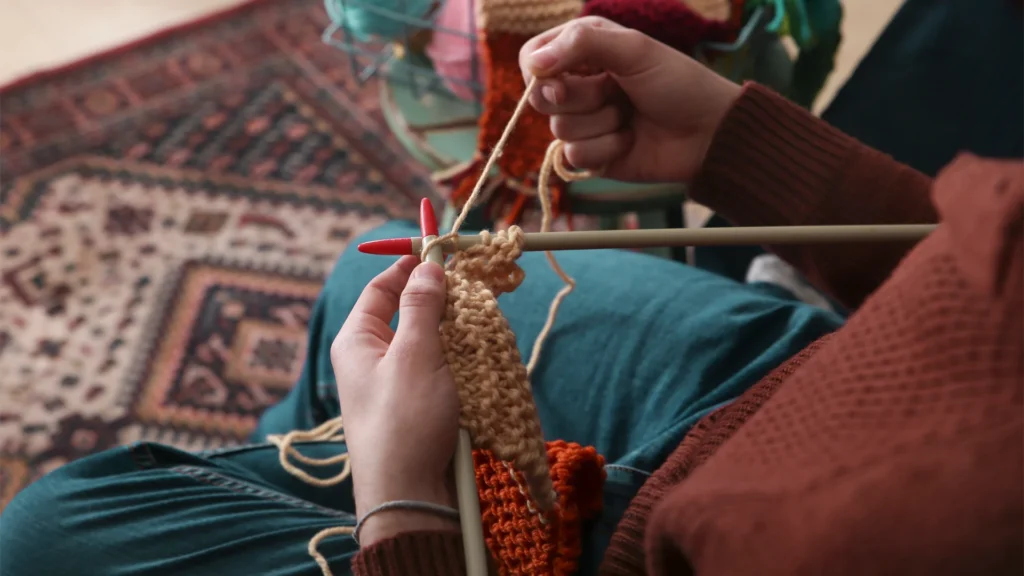
Benefits of Tactile Learning
Tactile learning provides powerful benefits that go beyond what traditional methods can achieve. Through hands-on experiences and physical engagement with materials, tactile learning strengthens neural connections and leads to meaningful improvements in how we understand and retain information. Here are the key benefits of tactile learning:
1. Improved Memory Retention
Tactile learning significantly enhances memory retention. The brain forms stronger memory connections when multiple senses are involved. Studies show that learning by doing can boost retention rates to up to 75%, compared to a mere 5% retention from lecture-based learning. The physical interaction with materials creates vivid sensory memories, making it easier to recall and understand concepts.
2. Improved Focus and Engagement
Tactile learners experience heightened focus and engagement due to the active, hands-on nature of their learning process. The benefits include:
- Increased Motivation: Active participation in learning boosts motivation and interest.
- Better Concentration: By involving physical movement, tactile learning helps learners concentrate better, especially on complex subjects.
- Deeper Understanding: Direct interaction with learning materials fosters a deeper grasp of concepts.
- Enhanced Critical Thinking and Problem-Solving: Tactile learning encourages creative thinking, as it challenges learners to engage in problem-solving activities that require physical interaction and manipulation.
- Improved Creativity: The hands-on approach often leads to innovative learning strategies and breakthroughs in understanding.
3. Hands-On Learning Equals More Success
Our research consistently shows that students who engage in tactile learning experience more profound success in their educational journeys. This method creates an interactive, sensory-rich learning environment that not only aids memory but also drives curiosity, creativity, and critical thinking.
4. Practical Applications of Tactile Learning in Various Learning Environments
Tactile learning is a versatile approach that can be applied across different learning environments and subjects. Its hands-on nature helps learners engage more deeply with material, improving understanding, memory, and emotional connection. Here are some of the key applications in various settings:
| Learning Environment | Benefits |
|---|---|
| Science & Math | Improved understanding of complex concepts, like physics or geometry, through hands-on experiments and manipulative tools. |
| Special Education | Enhanced outcomes for students with ADHD, dyslexia, or other learning challenges by offering physical interaction and structure. |
| Collaborative Settings | Strengthened teamwork and communication skills, as students engage together in hands-on activities. |
5. Technological Enhancements in Tactile Learning
The integration of technology with tactile learning has unlocked new potential. Interactive whiteboards, touchscreens, and other digital tools now provide tactile feedback, enhancing the learning experience. These technological advancements have particularly shown strong results in the following areas:
- Handwriting Proficiency and Fine Motor Control: Students practice writing with physical feedback that strengthens motor skills.
- Geometry and Spatial Recognition: Tactile learning tools allow students to feel and manipulate geometric shapes, improving their spatial understanding.
- Collaborative Education Environments: Group activities on interactive devices foster cooperation and engagement while providing tactile feedback.
6. Emotional and Cognitive Impact of Tactile Learning
Our experience reveals that tactile learning fosters not only intellectual growth but also emotional development. The physical interaction with learning materials creates an emotional connection, encouraging pride and accomplishment. Learners are more invested in their success when they actively engage with the material.
- Increased Emotional Engagement: Tactile learning generates strong emotional responses, which can make educational experiences feel more meaningful and memorable.
- Empathy and Understanding: Physical interaction with learning materials can evoke empathy and facilitate a deeper understanding of complex concepts, particularly in subjects like history, social studies, and literature.
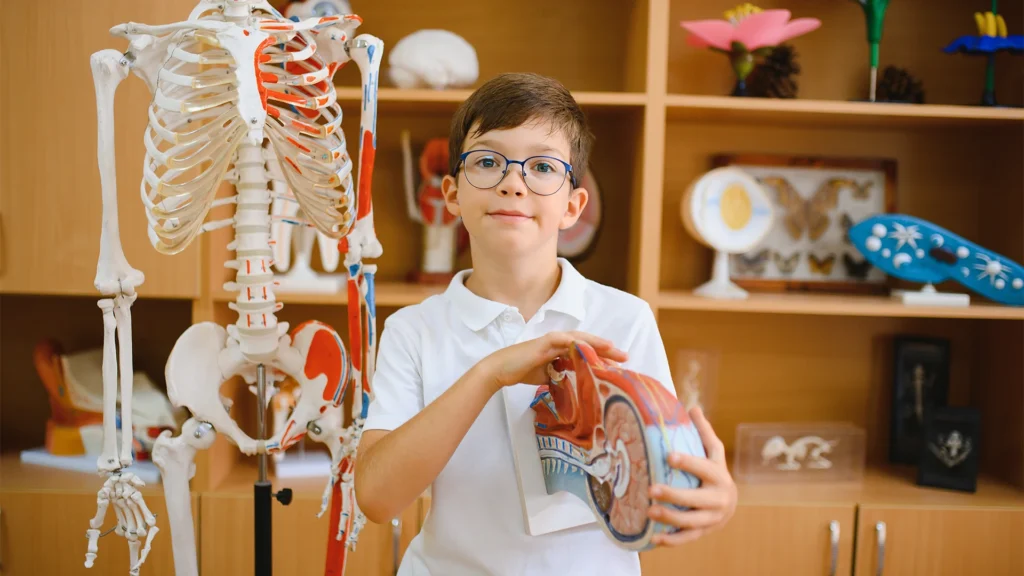
Strategies for Tactile Learners
Through our experience, we’ve developed effective strategies to help tactile learners thrive in any educational setting. These approaches are designed to engage tactile learners by activating their senses and incorporating hands-on experiences into their learning. Let’s dive into the strategies that make learning not only successful but also enjoyable and memorable.
1. Hands-on Learning Activities for Tactile Learners
Tactile learners thrive when they can physically interact with learning materials. Creating sensory-rich activities helps solidify abstract concepts and makes learning a tangible experience. Here are some of our most successful approaches for tactile learners:
- Sensory Bins: Fill bins with materials like rice, sand, water beads, or fabric scraps for children to explore textures and sensory experiences while learning about different topics.
- Playdough Activities: Let learners use playdough to mold shapes, form letters, or model scientific concepts. This tactile interaction strengthens fine motor skills and cognitive understanding.
- Textured Materials: Use materials like textured paper, fabric, or foam to form letters, numbers, or shapes, helping students physically feel and learn.
- Nature Walks and Scavenger Hunts: Take students on outdoor walks to explore different textures and objects in nature. This physical interaction with the environment encourages observational learning and provides a sensory-rich experience.
2. Interactive Methods and Tactile Learning Tools
Incorporating interactive tools into lessons can significantly enhance tactile learning. These tools support hands-on exploration, allowing learners to experience concepts through touch. Here’s how we use various activities and tools for maximum engagement:
| Activity Type | Tools Used | Learning Outcome |
|---|---|---|
| Math Learning | Counting cubes, Base-ten blocks | Boosts number comprehension by allowing physical manipulation of numbers. |
| Science Experiments | Lab equipment, 3D models | Enhances concept understanding by providing hands-on interaction with scientific tools and models. |
| Language Arts | Textured flashcards, Gel pens | Improves retention by allowing students to feel the shapes of words and letters while writing or reading. |
3. Study Tips and Techniques Tailored to Tactile Learners
Our observations highlight that tactile learners perform best when they incorporate physical movement and sensory experiences into their study routines. Here are some of our top study tips and techniques that can enhance their learning experience:
- Write Things Down: Writing notes by hand helps reinforce information and improves memory retention. The physical act of writing engages motor skills and helps learners absorb the material more deeply.
- Study with a Friend: Collaborative learning works well for tactile learners. Study groups and discussions allow for interactive learning, which helps learners absorb information better through social and physical engagement.
- Pace or Walk While Reciting Information: Many tactile learners find that pacing or walking while reviewing notes helps them focus and remember details more effectively. Movement stimulates cognitive functions and keeps the brain alert.
- Use Malleable Objects During Study Time: Incorporate objects like playdough, stress balls, or fidget toys to manipulate while studying. This keeps hands engaged and helps learners concentrate on the material at hand.
- Take Regular 25-Minute Study Breaks: Using the Pomodoro technique—studying for 25 minutes followed by a break—helps maintain focus and allows for physical movement during the breaks to refresh the mind.
4. Examples of Tactile Learning Strategies
Tactile learning strategies are most effective when combined with traditional study methods. Here are some of our successful strategies that mix tactile elements into everyday learning:
- Create Mind Maps While Taking Notes: Drawing or building mind maps helps tactile learners visualize connections between ideas while using their hands to create the structure.
- Use Calculators to Grasp Mathematical Concepts: Manipulating a calculator or other tools to solve problems engages tactile learners and helps them better understand abstract mathematical concepts.
- Design Their Own Flashcards: Writing and designing their own flashcards allows tactile learners to actively engage with the material, reinforcing their learning through both creation and repetition.
- Join Group Studies: Study groups and interactive sessions provide tactile learners with opportunities to work physically and socially with peers, enhancing their understanding through collaborative efforts.
5. Learning Activities for Tactile Learners
Adding tactile activities to lessons can significantly improve engagement and learning outcomes. These activities encourage hands-on involvement, making learning more enjoyable and memorable:
- Arts and Crafts Projects: Encourage students to engage in crafting, which helps them explore creative concepts while involving their hands in the process.
- Water Play with Different Temperatures: Students can engage with different textures and sensations by playing with water at various temperatures, which can be integrated into scientific or sensory learning activities.
- Messy Play Activities: Activities like finger painting, sand play, or clay molding give tactile learners the opportunity to learn through touch, which enhances both creativity and retention.
- Oral Motor Activities: Oral exercises, like blowing bubbles or making sounds, can be used to engage tactile learners in activities that improve motor control and cognitive function.
6. Tips and Techniques for Maximizing Tactile Learning
The most effective way to help tactile learners succeed is by offering them a variety of tactile experiences in their learning process. Here are some proven tips and techniques:
- Set Up Learning Provocations with Different Tactile Experiences: Design activities or experiments that allow students to engage physically with the learning material. This could include building models, solving hands-on puzzles, or manipulating objects.
- Use Guided Tactile Exploration to Focus Learning: Give students guided tasks that involve hands-on exploration, which helps them focus their attention on key concepts while using touch to understand them better.
- Add Tactile Cues in Explicit Teaching Lessons: Include physical objects, textures, or gestures in teaching lessons to provide tactile cues that help students connect abstract ideas with tangible experiences.
- Mix Tactile Experiences with Visual or Auditory Elements: Integrating tactile learning with visual or auditory elements (like using textured flashcards or playing sounds while interacting with objects) creates a multi-sensory experience that enhances retention and understanding.
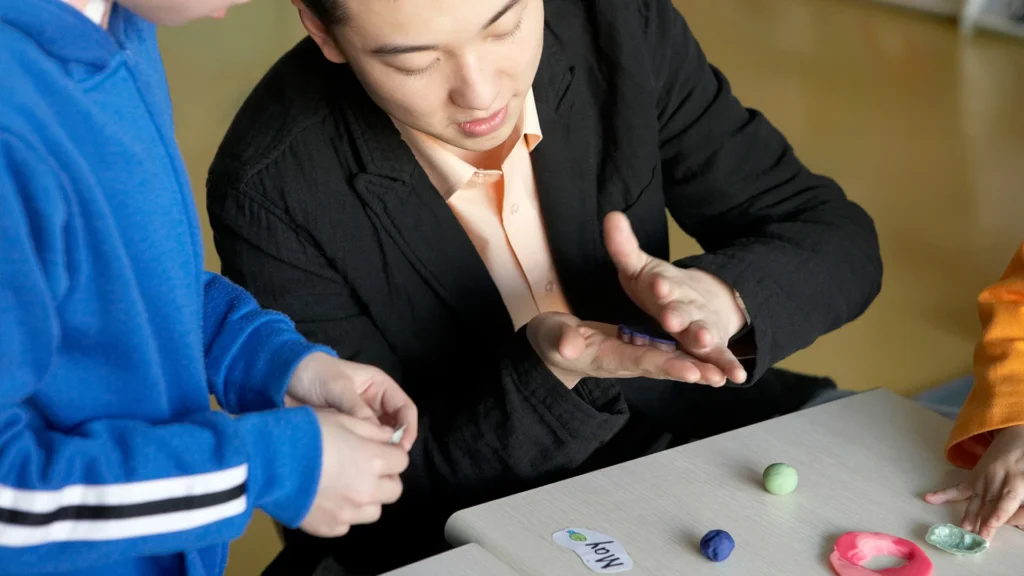
How to Use Tactile Learning in Your Studies or Classroom
Tactile learning provides an excellent way to enhance educational experiences, whether you’re a teacher or a student. By incorporating hands-on, sensory activities, students can engage with the material more effectively. Below are some practical tips and strategies for successfully implementing tactile learning in your studies or classroom:
Practical Tips for Implementing Tactile Learning Methods
Tactile learning requires thoughtful planning and organization. To maximize its effectiveness, students should be placed in environments conducive to hands-on learning. Here are some proven strategies for creating a tactile-friendly environment:
- Create Multi-Sensory Learning Stations: Design learning areas where students can engage multiple senses at once—sight, sound, and touch. This can include stations with textured materials, tools for hands-on projects, or sensory bins with different objects to explore.
- Stock Various Textured Materials and Manipulatives: Have items like playdough, clay, wooden blocks, fabric swatches, or other materials that students can touch and manipulate. These tools help reinforce learning concepts by allowing students to explore physically.
- Incorporate Technology Like Interactive Whiteboards: Interactive whiteboards and touchscreens can bring tactile learning into the digital age. Using touch-sensitive boards or apps that allow students to draw, manipulate, and interact with content enhances the learning experience.
- Design Flexible Seating Arrangements: Allow students to move around, stand, or sit in different positions that support physical engagement. Flexible seating lets tactile learners move freely while they work with materials or participate in group activities.
- Set Up Hands-On Project Areas: Establish dedicated spaces for art, science experiments, and other projects that encourage hands-on interaction. These areas can include workbenches or craft tables where students can engage directly with learning materials.
Effective Tactile Learning Activities for Students of All Ages
The following activities cater to different age groups and demonstrate the benefits of hands-on learning across educational stages:
| Age Group | Recommended Activities | Learning Benefits |
|---|---|---|
| Early Years | Sensory bins, playdough | Motor skill development, sensory exploration |
| Elementary | Science experiments, math manipulatives | Concept understanding, problem-solving |
| Secondary | Lab work, 3D modeling | Abstract thinking, spatial recognition |
| Adult | Role-playing, hands-on workshops | Practical application, critical thinking |
These activities help engage students in physical learning, making it more memorable and practical. Research indicates that hands-on tasks can increase engagement and retention by up to 75%.
How Teachers Can Incorporate Tactile Strategies Into Their Teaching Methods
To integrate tactile learning strategies effectively, teachers should aim to weave hands-on activities into the core of their lessons. Here are ways to incorporate tactile learning throughout the lesson:
- Starting Lessons with a Tactile Warm-Up: Begin the class with an activity that involves touch, such as using manipulatives or exploring textures. This primes students for active participation.
- Using Manipulatives During Concept Introduction: When introducing a new concept, use physical tools (like math blocks or science kits) that students can touch and explore. This makes the abstract ideas more concrete and relatable.
- Including Hands-On Practice Sessions: Provide time for students to engage with learning materials through practical, hands-on tasks that allow them to apply concepts directly.
- Ending with Tactile Review Activities: Conclude the lesson with activities that involve the physical manipulation of materials, such as hands-on quizzes, games, or group projects. This helps reinforce what students have learned.
Examples of Tactile Learning Activities in Various Subjects and Adult Learning Applications
Tactile learning strategies can be tailored to specific subjects, helping students retain information and deepen their understanding. Here are some examples for different disciplines and adult learning:
Mathematics:
- Use base-ten blocks for understanding number systems and place values.
- Create geometric shapes using modeling clay to understand geometric concepts.
Science:
- Conduct hands-on experiments where students can manipulate lab equipment and materials.
- Build 3D models of molecular structures to visualize chemical bonds.
Language Arts:
- Write letters in textured materials (such as sandpaper or fabric) to reinforce letter formation.
- Create story maps using physical objects like cards, markers, or cut-out shapes to represent characters, settings, and plot.
Adult Learning:
- Participate in simulations where learners physically act out scenarios to understand real-world applications.
- Take part in hands-on workshops that allow learners to practice skills or trades.
- Practice with real-life tools (such as technical equipment or office tools) to gain hands-on experience relevant to their field.
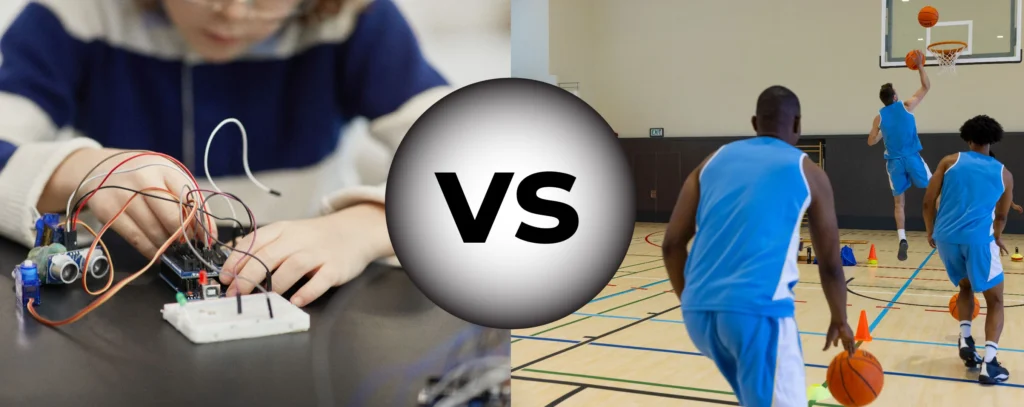
Tactile vs. Kinesthetic Learning: What’s the Difference?
Tactile and kinesthetic learning are both hands-on approaches that involve physical interaction with the environment. Although they share several similarities, they have distinct focuses that cater to different learning styles. Here’s a detailed comparison:
| Aspect | Tactile Learning | Kinesthetic Learning |
|---|---|---|
| Focus Area | Hands and fingers | Whole body movement |
| Primary Activities | Manipulation of objects | Physical movement, action |
| Learning Scale | Small, detailed work | Large, gross motor activities |
| Typical Tools | Manipulatives, textures | Space, equipment, props |
Key Similarities Between Tactile and Kinesthetic Learning
Both approaches emphasize the importance of physical engagement in the learning process. Here are some overlapping traits:
- Physical Interaction: Both tactile and kinesthetic learning involve direct physical interaction with the learning materials or environment.
- Active Involvement: Students are actively involved in their learning process, making these approaches more dynamic than traditional passive methods.
- Experiential Learning: These methods follow experiential learning principles, where learners “learn by doing,” enhancing retention and understanding.
- Memory Improvement: Engaging in physical activities, whether small or large, strengthens memory by creating sensory and motor connections that reinforce learning.
Differences in Focus and Approach
-
Tactile Learning: Primarily involves the sense of touch, and it focuses on fine motor skills such as handling objects, textures, and small manipulations. For example, activities like molding clay or using beads for counting are examples of tactile learning.
-
Kinesthetic Learning: Involves whole-body movement, such as dancing, sports, or role-playing. Kinesthetic learners engage in large-scale physical activities to understand concepts, like acting out historical events or building physical structures to demonstrate engineering principles.
| Aspect | Tactile Learning | Kinesthetic Learning |
|---|---|---|
| Focus Area | Hands and fingers | Whole body movement |
| Primary Activities | Manipulation of objects | Physical movement, action |
| Learning Scale | Small, detailed work | Large, gross motor activities |
| Typical Tools | Manipulatives, textures | Space, equipment, props |
Understanding Tactile Learning within the Broader Kinesthetic Learning Framework
Tactile learning is often considered a specialized form of kinesthetic learning. While all tactile activities involve physical movement and interaction, not all kinesthetic activities require tactile elements. However, when both learning styles are combined, they create a more dynamic and effective learning experience.
Tactile Learning within Kinesthetic Framework: Key Components
Here’s a deeper look at how tactile learning fits within the broader kinesthetic framework:
1. Fine Motor Skills Development
- Tactile: Writing with textured materials (e.g., raised-line paper, sandpaper letters) helps learners develop fine motor skills by using their hands and fingers.
- Kinesthetic: Full arm movements for letter formation, such as tracing letters or writing on large surfaces, promotes the development of gross motor skills.
2. Concept Understanding
- Tactile: Manipulating small objects, like counting cubes or clay, to solve math problems engages the learner’s sense of touch and helps solidify abstract concepts.
- Kinesthetic: Acting out mathematical concepts through movement, such as creating shapes with the body or physically moving objects to demonstrate mathematical principles.
3. Memory Enhancement
- Tactile: Touching and feeling different textures, like fabric samples or textured flashcards, strengthens memory retention through sensory experiences.
- Kinesthetic: Walking through historical timeline activities or creating physical representations of concepts helps learners connect ideas to physical movement.
Blending Tactile and Kinesthetic Learning for Greater Impact
Learning is most effective when tactile and kinesthetic approaches are used together. This blend allows learners to experience concepts through multiple physical channels, leading to stronger neural connections and deeper understanding.
Example Activity: Teaching Geometry
- Tactile: Students trace shapes with their fingers on textured surfaces to feel the form and structure.
- Kinesthetic: They create large-scale versions of geometric shapes with their bodies or use their bodies to represent angles and lines.
- Tactile: Manipulating 3D models of geometric shapes helps students visualize and understand abstract concepts.
- Kinesthetic: Moving through space to explore spatial relationships, such as physically navigating between angles or lines to understand their relative positions.
By combining tactile and kinesthetic activities, students gain a multi-sensory experience, which enhances both understanding and memory. This approach is particularly beneficial in subjects like geometry, science, and history, where abstract concepts benefit from tangible, physical interactions.
Challenges and Solutions for Tactile Learners
Tactile learners often struggle in traditional educational settings that prioritize visual and auditory learning. These students benefit from hands-on, physical engagement with the material, but when confined to traditional classrooms, they face several challenges.
Common Challenges Faced by Tactile Learners
Research and classroom experience have shown that tactile learners experience several difficulties in conventional educational setups, including:
- Restlessness During Long Lectures: Sitting still for extended periods is difficult for tactile learners, leading to fidgeting or difficulty staying focused.
- Poor Focus in Traditional Settings: The lack of physical activity or hands-on involvement can make it hard for these students to concentrate and absorb information.
- Frustration with Visual or Verbal Instructions: Tactile learners struggle with instruction styles that rely heavily on listening or watching without a physical component.
- Problems with Confined Spaces: Traditional classroom setups often limit movement, which is essential for tactile learners to stay engaged.
- Difficulty with Extended Stillness: Sitting still without physical interaction can create frustration and disengagement.
Common Challenges Faced by Tactile Learners
Research and classroom experience have shown that tactile learners experience several difficulties in conventional educational setups, including:
- Restlessness During Long Lectures: Sitting still for extended periods is difficult for tactile learners, leading to fidgeting or difficulty staying focused.
- Poor Focus in Traditional Settings: The lack of physical activity or hands-on involvement can make it hard for these students to concentrate and absorb information.
- Frustration with Visual or Verbal Instructions: Tactile learners struggle with instruction styles that rely heavily on listening or watching without a physical component.
- Problems with Confined Spaces: Traditional classroom setups often limit movement, which is essential for tactile learners to stay engaged.
- Difficulty with Extended Stillness: Sitting still without physical interaction can create frustration and disengagement.
Solutions for Overcoming These Challenges
Our research suggests that adjusting the learning environment and implementing specific strategies can help tactile learners succeed. The following solutions have shown positive results in addressing these challenges:
| Challenge | Solution | Implementation |
|---|---|---|
| Restlessness | Movement breaks | Integrate short walks or stretching exercises during lessons to reduce restlessness. |
| Focus Issues | Tactile aids | Use stress balls, fidget tools, or textured materials to help focus during lectures. |
| Confined Space | Flexible seating | Offer standing desks or designated movement areas where students can move freely. |
| Extended Stillness | Active learning | Incorporate hands-on activities and interactive lessons that require physical engagement. |
Strategies for Effective Learning for Tactile Learners
To help tactile learners succeed, consider the following strategies for creating a more effective learning environment:
-
Creating Movement Opportunities: Regular breaks for physical activity can help tactile learners engage with the material and reduce restlessness.
-
Incorporating Hands-On Activities: Supplement traditional lessons with manipulatives or physical models to enhance understanding, especially for abstract concepts.
-
Using Tactile Learning Materials: Utilize items like clay, sensory tools, or textured flashcards to reinforce learning through touch.
-
Active Learning Approaches: Incorporate activities that require student movement, such as role-playing, building models, or physically arranging materials.
-
Sensory Tools to Improve Focus: Provide stress balls, fidget tools, or textured pads to help students stay focused during lessons.
-
Frequent Activity Breaks: Integrate regular breaks into the classroom schedule to allow tactile learners to move and refocus.
Support Tips for Parents and Educators
To provide better support for tactile learners, it’s crucial to implement strategies both at school and at home. Here’s a breakdown of practical tips for educators and parents:
For Educators:
- Turn Lessons into Interactive Experiences: Engage students with hands-on tasks that directly relate to the content.
- Use Educational Technology: Incorporate tools like interactive whiteboards, digital apps, or virtual learning resources that involve tactile interaction.
- Create Multisensory Environments: Blend tactile, auditory, and visual inputs to create an immersive learning space.
- Offer Movement-Based Learning Options: Provide opportunities for students to physically interact with learning materials or concepts.
- Provide Tactile Materials: Supply manipulatives, textured materials, or other hands-on tools to enhance learning.
For Parents:
- Set Up Dedicated Learning Spaces: Create areas at home where children can engage with hands-on activities like building, crafting, or experimenting.
- Encourage Movement During Study Sessions: Allow children to move, take breaks, or use fidget tools while doing homework.
- Break Study Sessions into Manageable Segments: Divide study time into short, focused intervals with breaks in between.
- Support Physical Activities Between Tasks: Encourage activities like jumping jacks, dancing, or playing outside to keep children energized.
- Use Tactile Learning Tools: Provide sensory objects and interactive materials to reinforce learning at home.
Additional Tips for Educators and Parents
To further support tactile learners, we recommend the following practices:
- Note-Taking: Encourage tactile learners to take notes by hand, as writing helps retention and understanding.
- Fidget Tools: Provide stress balls or other tactile items during lectures to keep hands engaged.
- Interactive Learning: Engage students in hands-on experiments or collaborative projects that require physical participation.
- Physical Models: Help students build or manipulate physical models of concepts to reinforce learning.
- Experiential Learning: Encourage participation in experiments or activities that require hands-on engagement, like science labs or art projects.
Tactile learning is a transformative approach that taps into the brain’s natural ability to process and retain information through physical interaction. Studies affirm that tactile learners achieve retention rates as high as 75%, significantly surpassing traditional methods. By engaging in hands-on activities, learners build stronger neural connections and gain a deeper understanding of concepts.
The success of tactile learning hinges on thoughtful implementation. Dedicated spaces for movement and hands-on activities, coupled with the right tools, empower students and educators to achieve remarkable outcomes. While traditional classroom setups may pose challenges for tactile learners, tailored strategies and movement opportunities can turn obstacles into avenues for growth.
As Maria Montessori insightfully observed, “What the hand does, the mind remembers.” This profound connection between touch and cognitive development underscores the importance of tactile learning in modern education. By embracing this approach, we not only foster inclusivity but also create richer, more effective learning experiences that cater to diverse needs and unlock the full potential of every learner.








